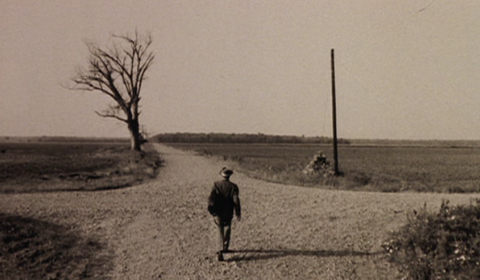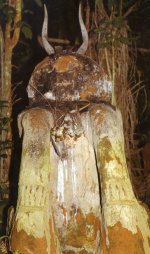Last week we looked at what 3 weird things you might find at an English crossroads. A lot of people on Twitter wanted to know more, so I’ve widened my focus to include more global crossroads legends! This week we’ll look at a more well-known legend about the Devil and the Deep South, a Vodou figure, and a Greek Goddess.
Let’s head on down to the crossroads, shall we?

The Devil – the daddy of crossroads legends
Last week we saw that the crossroads formed a popular burial site for suicides and witches in the UK. But the folklore of Europe, India, Japan, and America all feature myths about the demons that lurk that the crossroads.
Popular culture got in on the fact in the early 20th century. F. W. Murnau’s version of Faust (1926) showed the hapless Faust summoning Mephistopheles at the crossroads.

But while Mephistopheles and Faust undoubtedly occupy a privileged position in ‘soul selling’ circles, the story of Robert Johnson deserves more attention here.
While it varies in the telling, the general gist explains that blues legend Johnson, then a mediocre guitarist in Robbinsville, suddenly left the area. When he returned, his newfound remarkable abilities shocked his contemporaries.
Naturally people asked about his sudden proficiency, and he allegedly described selling his soul to the Devil at a crossroads. His early, and mysterious, death at 27 only added credence to his Faustian pact explanation.

Why the crossroads? As we saw last week, the intersection of two routes means that crossroads exist in a ‘neither here nor there’ place. What better place for the Devil, or one of his minions, to make an appearance?
Papa Legba – Loa of the crossroads
Among his many names, Papa Legba is sometimes called the Lord of the Roads, and the Loa of the Crossroads. According to Leah Gordon, “Papa Legba governs the threshold to the spirit world. As master of the crossroads, he can help you find the way if you are lost” (2000, 52).
He’s also associated with Hermes in Greek mythology and Janus in Roman myth, both liminal figures between worlds. He’s also linked with the saints Peter, Anthony and Lazarus, which is hardly surprising! Many Vodou figures were twinned with saints to enable slaves to continue their practice while appearing to convert to Catholicism.

Papa Legba has different functions within Haitian Vodou, but what interests me here is his role as the keeper of intersections, roads, doors and so on. He acts as a liminal figure, between the spirit and mortal worlds, able to communicate with both (much like Hermes).
However, Papa Legba has a dark aspect in the form of Kalfu, also known as Carrefour, who controls the crossroads. It’s this dark aspect that probably inspired the writers of American Horror Story: Coven when they decided to depict Papa Legba as a villain. Lady Geek Girl has a brilliant post that clears up the misconceptions of that show around Papa Legba.
Interestingly, in the film Crossroads (1986), it was a Papa Legba type figure that Robert Johnson and Willie Brown sold their souls to in exchange for musical success. This confuses Papa Legba with the Christian Devil, even though Vodou has no version of Hell. The film relies on the crossroads legends of early 20th century Delta blues music. But they probably should have just stuck with the Devil, instead of dragging Papa Legba into it!
Hecate – Queen of the Crossroads
Older than the Devil, Hecate appears in Greek mythology in association with crossroads legends. Also known as the Queen of the Night, the goddess also looked after entrances, dogs, light, magic or witchcraft, herbs and poisonous plants, ghosts, and necromancy.

Like Papa Legba, Hecate’s association with the spiritual world puts her on the boundary, a liminal figure with a foot in both worlds. Neither here nor there herself, it’s almost obvious that she’d become embroiled in crossroads legends. In modern witchcraft practice, Hecate also guards metaphorical crossroads.
In ancient times, stone pillars at three-ways crossroads provided a place for people to leave offerings of food for Hecate. Left at the new moon, such offerings protected those leaving them from evil spirits.

For me, Hecate best represents the crossroads – the meeting place of time and space in one handy intersection!
Over to you! Who else do you think you might encounter at a crossroads?
If you enjoyed this article, please consider sharing it! Sign up below for notifications of new articles and I’ll send you recommendations for five folklore podcasts.
References
Gordon, Leah (2000), The Book of Vodou: Charms and Rituals to Empower Your Life, London: Quarto Publishing plc.
Guiley, Rosemary (2010), The Encyclopedia of Witches, Witchcraft and Wicca, New York: Infobase Publishing.
Enjoyed this post?

Get 3 short creepy tales inspired by crossroads folklore straight to your inbox! By signing up, you also consent to receive my folklore emails every week.







Is crossroads true? And ungodly
I’m not sure what you mean?
How deep do you wish to go in the symbology……the connections ?
This is just a blog sharing folklore with people.